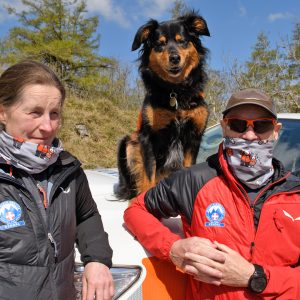75 Years of National Parks
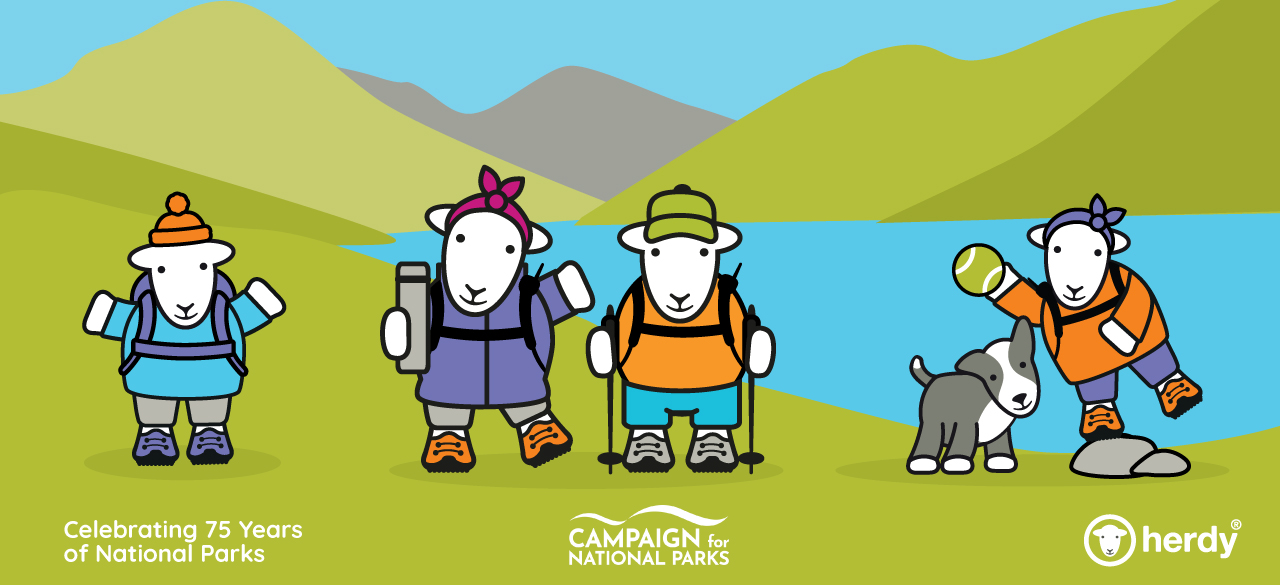
Joe and Flo are off on a big adventure to explore every National Park in England and Wales.
Each park is ewe-nique with its own history and culture which means there’s something for everyone. So, sandwiches packed, hiking boots on and map at the ready, Joe, Flo and Sheppy are ready to go!
-
The Lake District National Park
The first stop on their tour is on their front doorstep in the Lake District National Park. This UNESCO World Heritage Site is home to England’s largest lake, highest peak, and of course, the native Herdwick Sheep.
Fun Facts
- The Lake District is the largest national park in England, with over 200 fell tops, 26 miles of coastline and 28,500 hectares of woodland.
- England's highest mountain, Scafell Pike, sits in the heart of the Lake District, measuring an imposing 3210 feet.
- Wastwater is England's deepest lake, with a depth of 260 feet.
- Windermere is England's longest lake, measuring 18.08 km.
Threats facing the Lake District
Water pollution and climate change
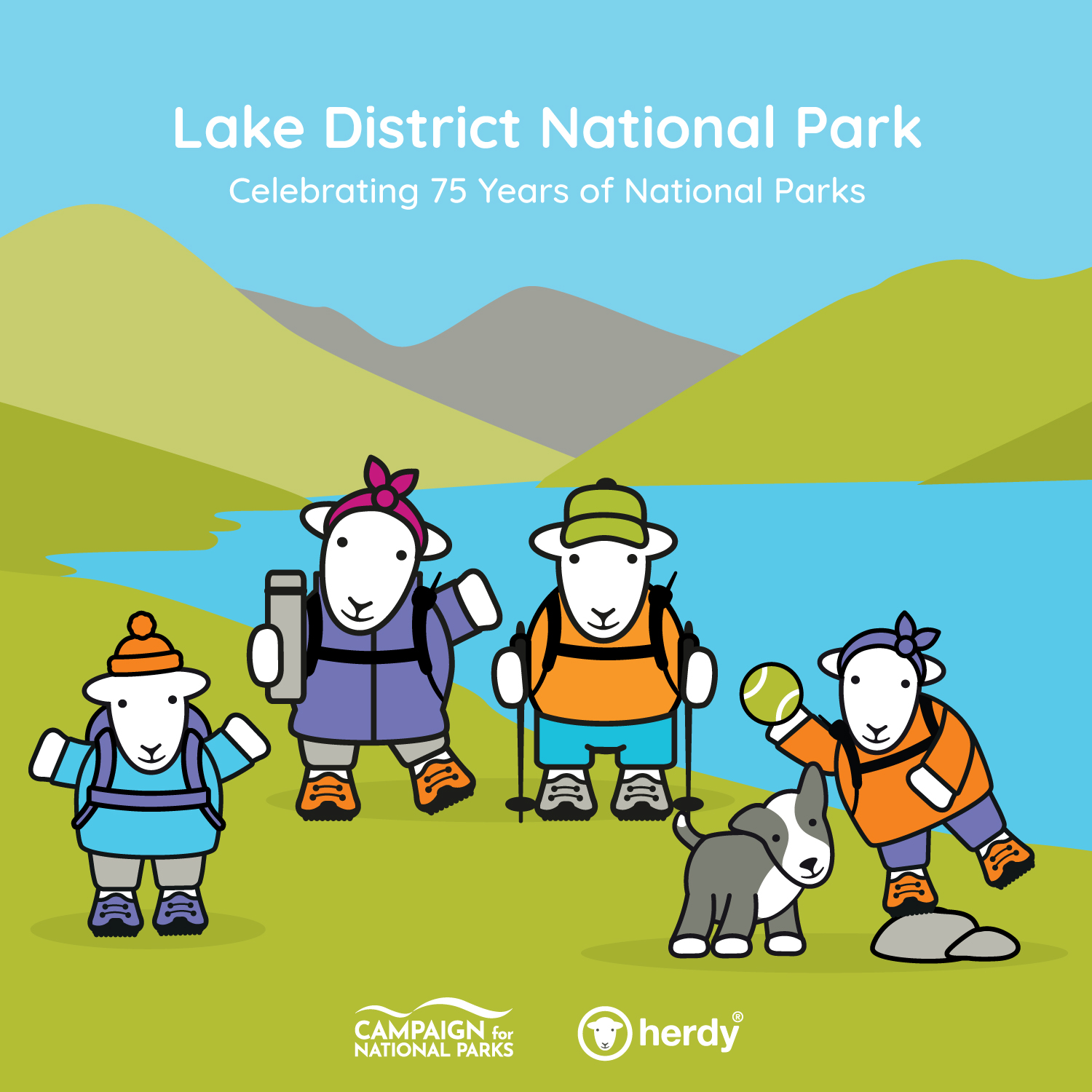
2. Northumberland National Park

From one of the busiest Parks to the quietest, Joe and Flo head north to Northumberland where they see the sky filled with millions of stars and follow along the iconic ruins of Hadrian’s Wall.
Fun Facts
- Northumberland National Park is one of the least visited but still captivating National Parks in England and Wales.
- It offers pristine views of millions of stars as far away as Andromeda (2.5 million light years from Earth). It forms part of the first International Dark Sky Park to be designated in England.
- The park is also home to iconic Roman ruins such as Hadrian’s Wall
Threats facing Northumberland
Increasing pressures from farming, climate change, industry and overdevelopment
3. North Yorkshire Moors
Next, it’s over to the North York Moors where Joe and Flo can roam free in the 44,000 hectares of moorland. Whilst keeping their eyes peeled for rare and endangered bird species such as the golden plover and the merlin.
Fun Facts
- The park contains one of the largest expanses of heather moorland in England and Wales at 44,000 hectares.
- The Park provides a haven for many threatened bird species.
- North York Moors has a rich cultural heritage, being an important region for mining and transport during the Industrial Revolution and remaining an important farming landscape today. You’ll be sure to cross paths with a Swaledale or two on your travels around the Moors.
Threats facing the North Yorkshire Moors
Increasing pressures from farming, fire, visitor pressure and forestry
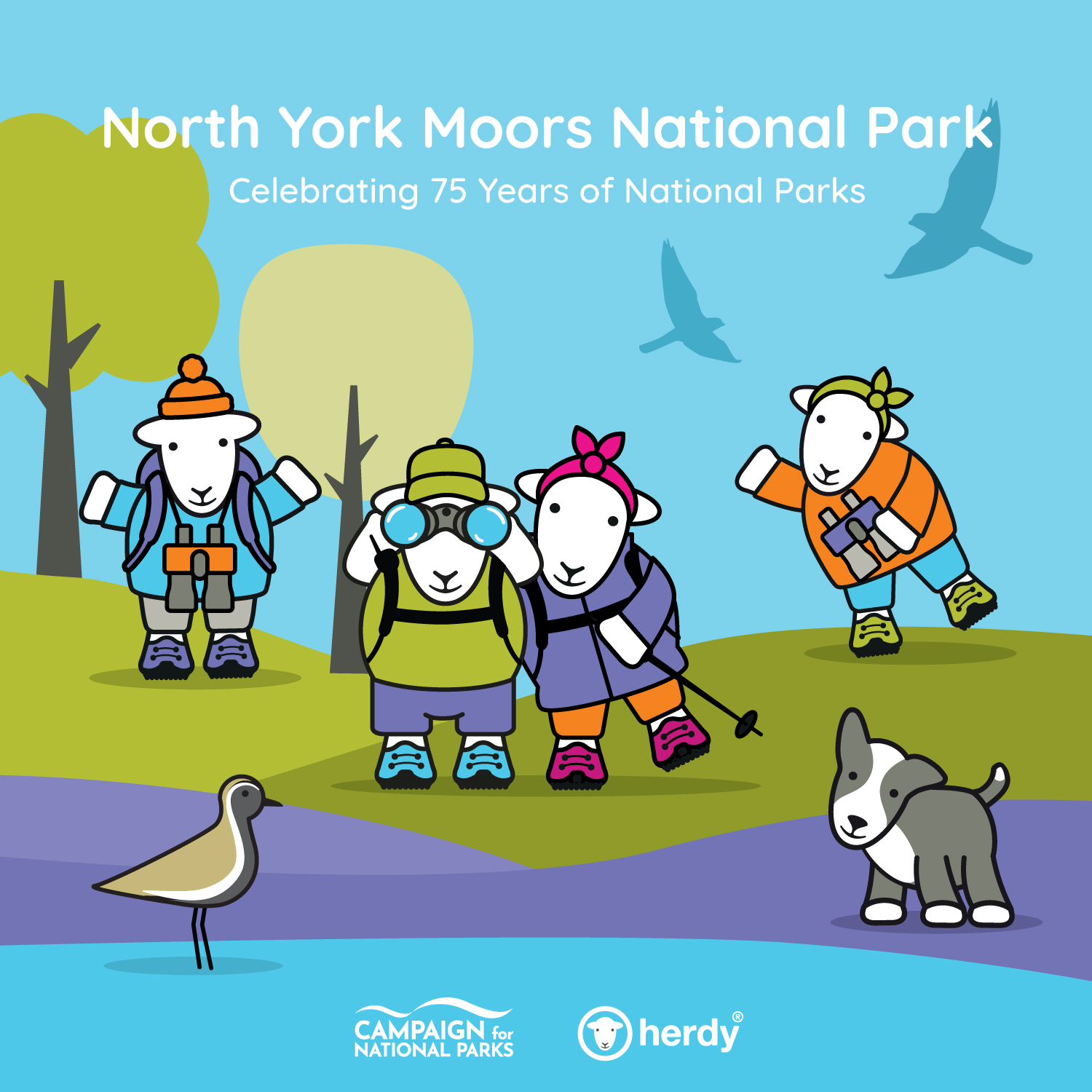
4. Yorkshire Dales
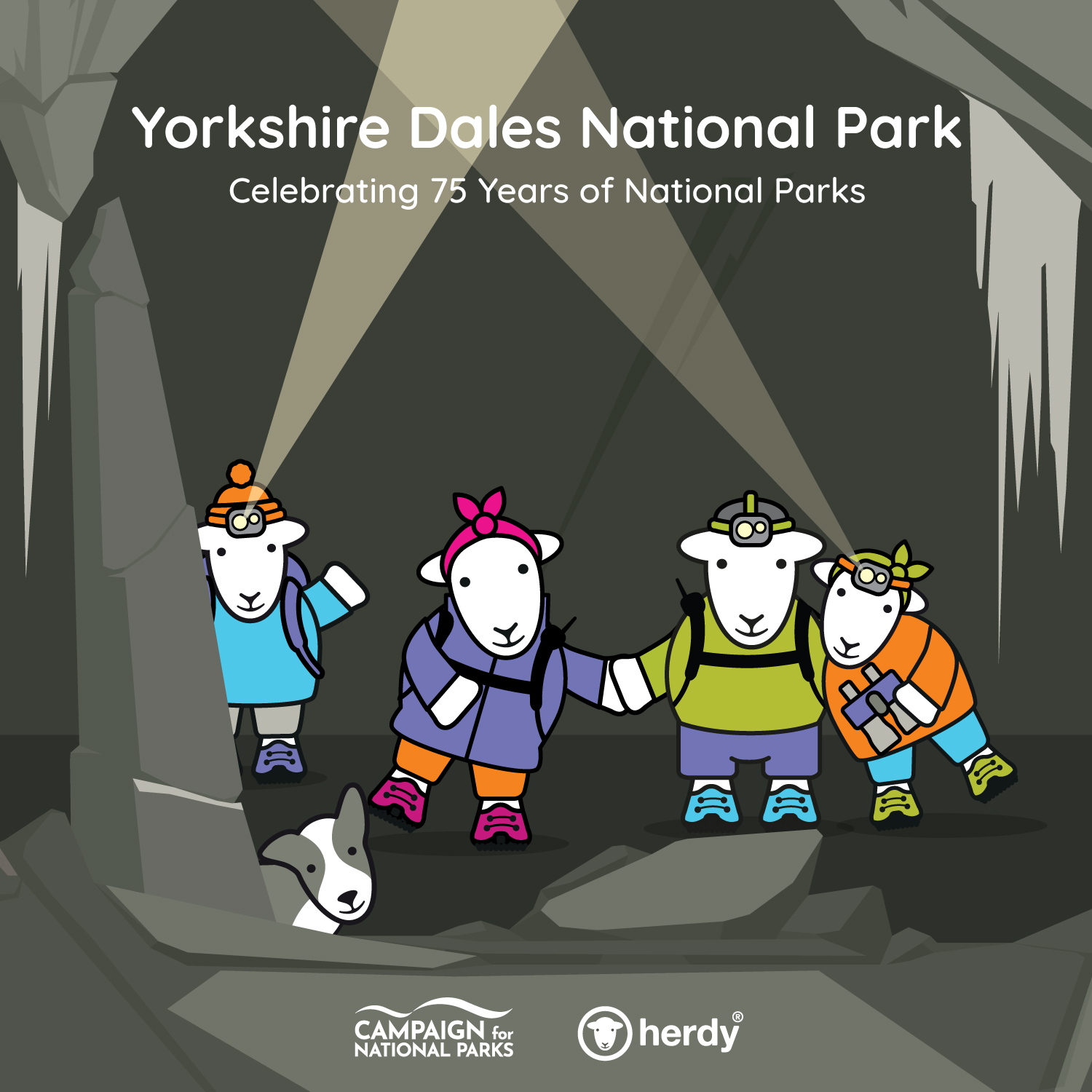
Home to the famous Three Peaks and iconic views such as Malham Cove, Joe and Flo will be spoilt for choice for things to do in the Yorkshire Dales. The park is also a Dark Sky reserve and home to some of the darkest night skies in the country. Where it’s possible to see the Milky Way and even the Northern Lights.
Fun Facts
- From rolling hills to striking waterfalls and unique limestone formations, the Yorkshire Dales are a special landscape shaped by human and natural activities.
- It includes some of the finest limestone scenery in the UK, from crags and pavements to an underground labyrinth of caves. Each valley or ‘dale’ has its own distinct character, set against expansive heather moorland tops.
- Stone-built villages sit amongst traditional farming landscapes of field barns, drystone walls and flower-rich hay meadows, and show how the area has been shaped over thousands of years by the people who have lived and worked here.
Threats facing the Yorkshire Dales
Increasing pressures from farming and climate change
5. Broads National Park
There’s no need to put those binoculars away as Flo and Joe head east to the Broads National Park, hopping on a boat to discover Britain’s largest protected wetland. If they’re lucky they might even see Britain’s largest butterfly, the Swallowtail.
Fun Facts
- The Broads is Britain’s largest protected wetland.
- Given equivalent status to National Parks in 1988, The Broads is unique in that it exists to protect the interests of navigation as well as typical National Park purposes relating to wildlife and visitor enjoyment.
- It is also home to more than a quarter of Britain's rarest species, including some only found on The Broads- the Norfolk Hawker Dragonfly and Britain’s largest butterfly, the Swallowtail.
Threats facing The Broads
Habitat degradation and water pollution
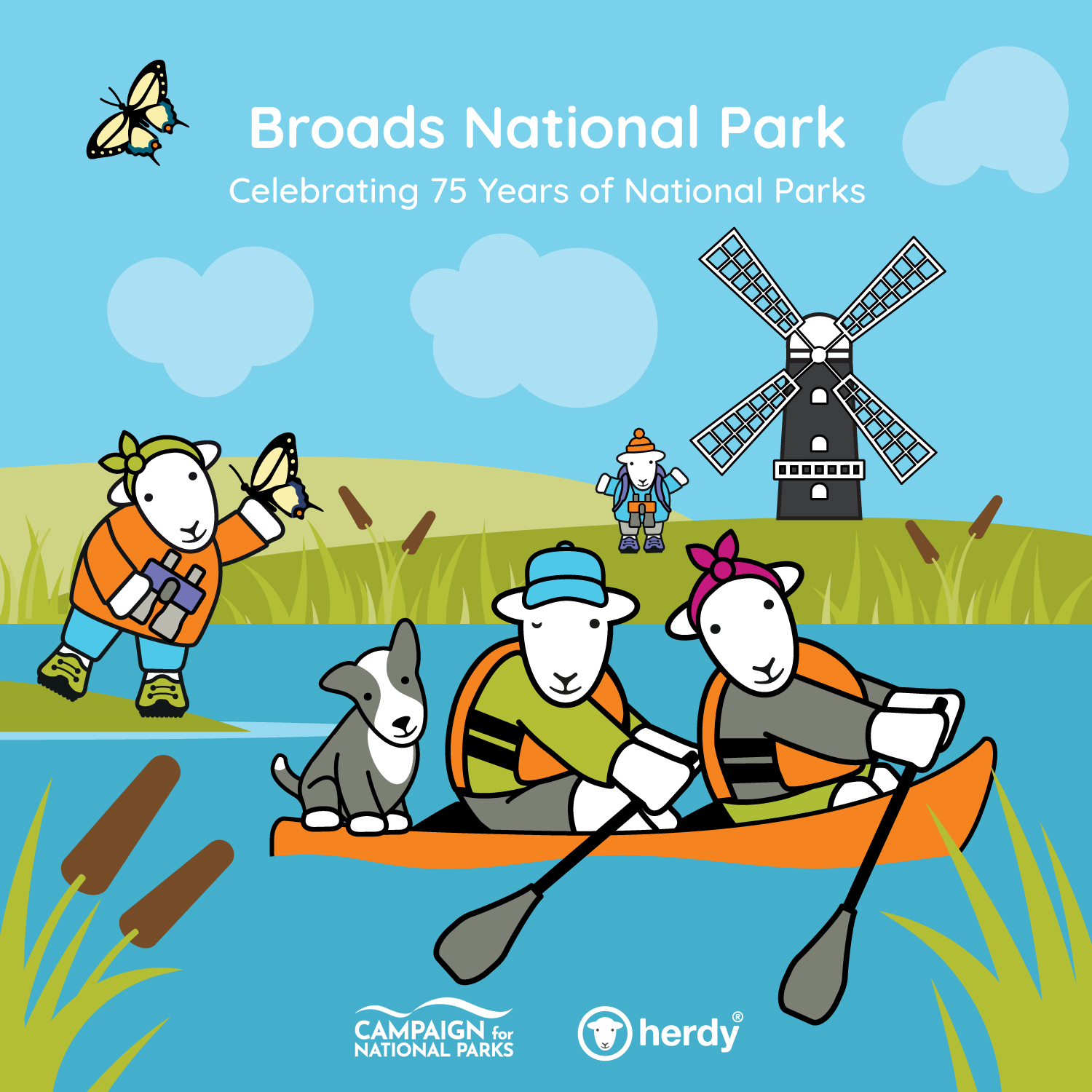
6. South Downs National Park
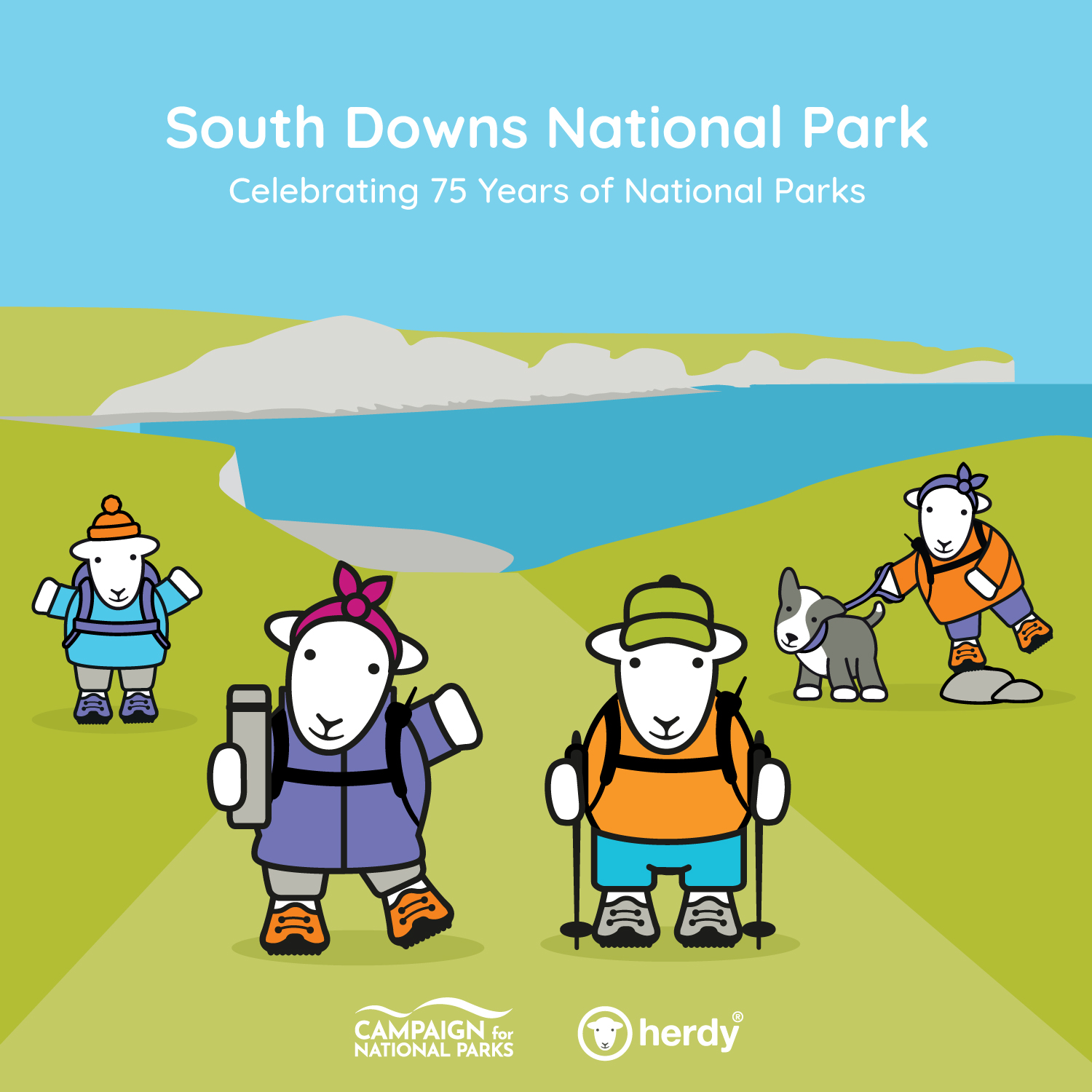
Time for another change of scenery in the lively South Downs National Park. The green rolling hills are home to market towns and villages, time for a cup of tea or maybe even a drop of wine from one of the many wineries and vineyards?
Fun Facts
- The South Downs National Park is the UK’s newest National Park, designated in 2010.
- Covering over 1600 square kilometres of England’s most valued lowland landscapes in the busiest part of the UK, it has been shaped by the activities of its farmers and foresters, its large estates and communities, its charities and local businesses.
- It includes inspirational landscapes, internationally important wildlife, cultural heritage and lively market towns and villages.
Threats facing the South Downs
Over tourism
7. New Forest
Just a hop skip and jump away lies the New Forest where Joe and Flo can meet the locals, thousands of free roaming animals call the Forest home which is one of the only remaining lowland common areas in Britain.
Fun Facts
- The Park is a patchwork of diverse habitats including ancient woodland, 26 miles of coastline and the most extensive area of heathland remaining in Europe with over 10,000 hectares.
- The New Forest is one of the only remaining lowland common areas in Britain. Thousands of free-roaming animals including ponies, sheep and cattle are managed by ‘commoners’, or local farmers and landowners.
- One of the best ways to get around the park is on a bike. Did ewe know the park has hundreds of miles of dedicated cycling routes to explore?
Threats facing the New Forest
Climate change, over tourism, increased pressures from farming
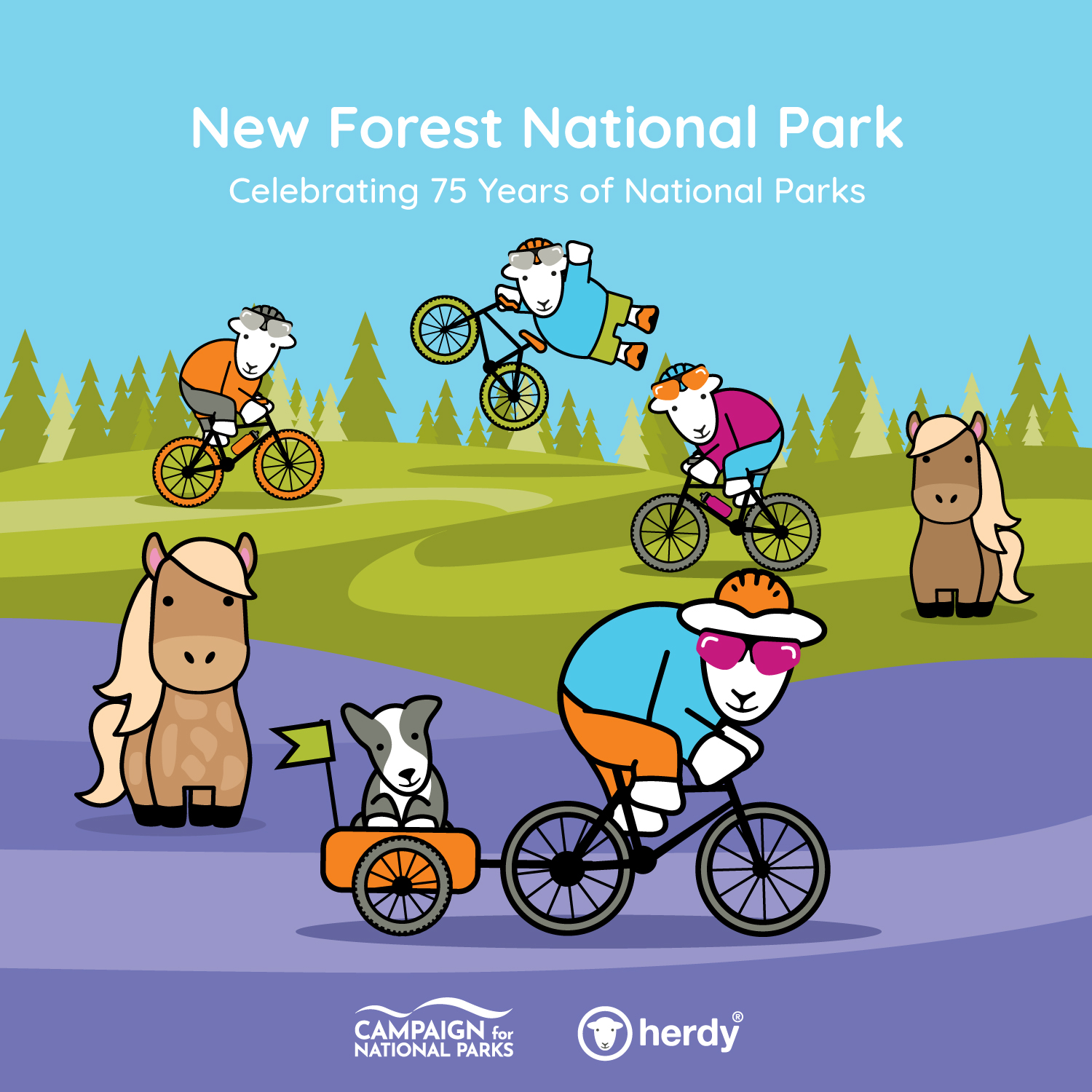
8. Dartmoor
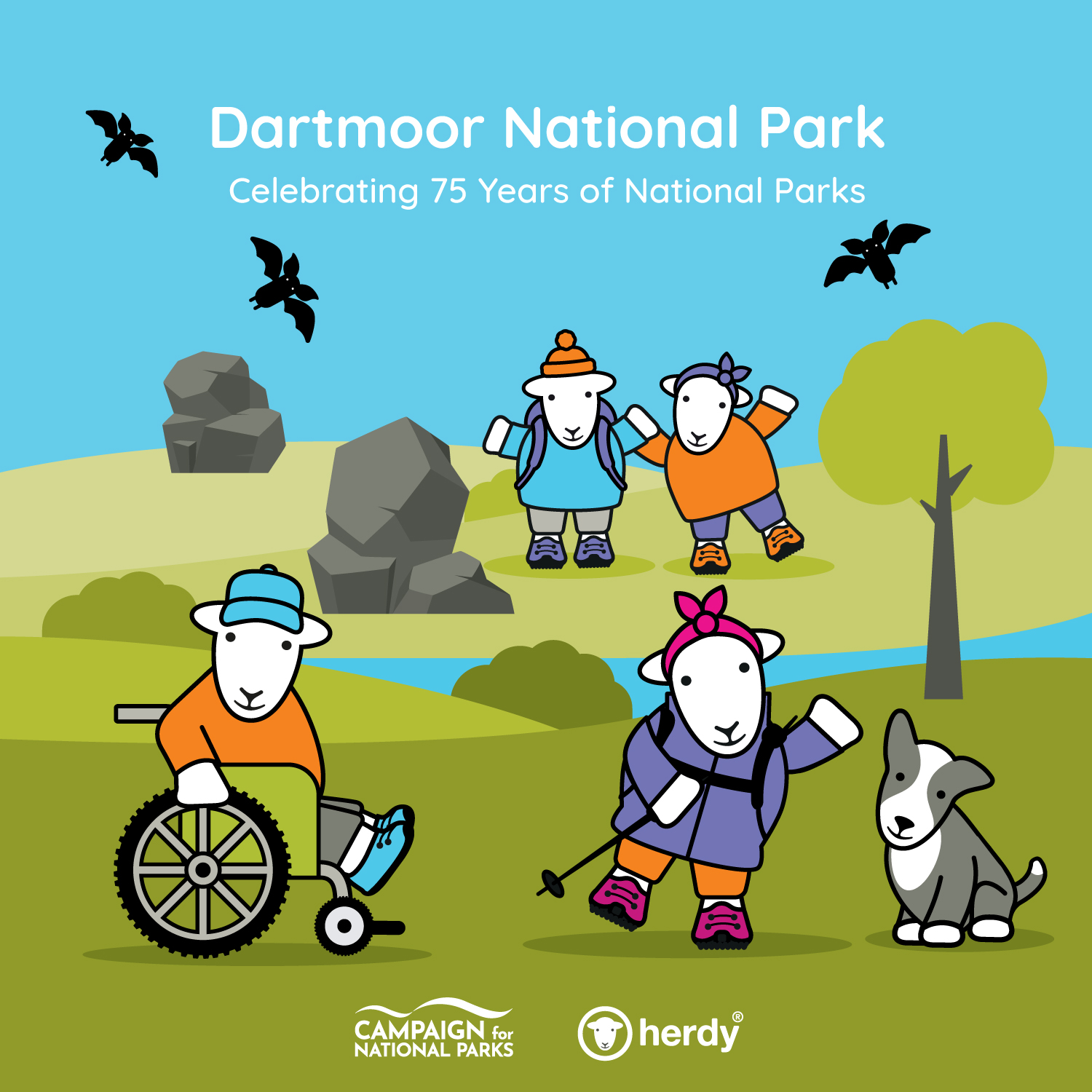
Heading west now to the dramatic Dartmoor National Park, with over 160 windswept tors to explore it’s easy to see why the Park was the setting for Sir Arthur Conan Doyle’s "Hounds of the Baskervilles".
The park is also accessible for everyone to enjoy, no matter your level of ability, needs or background. Miles Without Stiles are stile-free routes, meaning that they are suitable for those with limited mobility and can be found all across the park.
Fun Facts
- Nearly all of the UK's 16 bat species have been recorded on Dartmoor, due to the good connectivity of the wildlife habitats they require.
- The woodlands on Dartmoor are classed as temperate rainforests due to the relatively mild and rainy climate of the region, one of the rarest habitats in the world.
- Famous for its 160+ tors, this rugged landscape was even the setting for Sir Arthur Conan Doyle’s "Hounds of the Baskervilles"
Threats facing Dartmoor
Climate change
9. Exmoor
Next on the list is Exmoor where Joe and Flo try not to look down as they walk along the highest sea cliffs on the British mainland. And if they fancy getting their hooves wet, Exmoor has some of England’s most b-ewe-tiful beaches.
Fun Facts
- Exmoor has a distinctive coastline with the highest sea cliffs on the British mainland, the most extensive broadleaved coastal woods in Britain and the most remote shoreline in England.
- It is one of the most important areas in the UK for butterflies and is especially vital for the heath fritillary, found in only four locations in the UK.
- Tarr Steps, an Exmoor landmark, is the longest remaining stone slab clapper bridge in Britain and is believed to date back to around 1000 BC.
Threats facing Exmoor
Climate change

10. Bannau Brycheiniog National Park
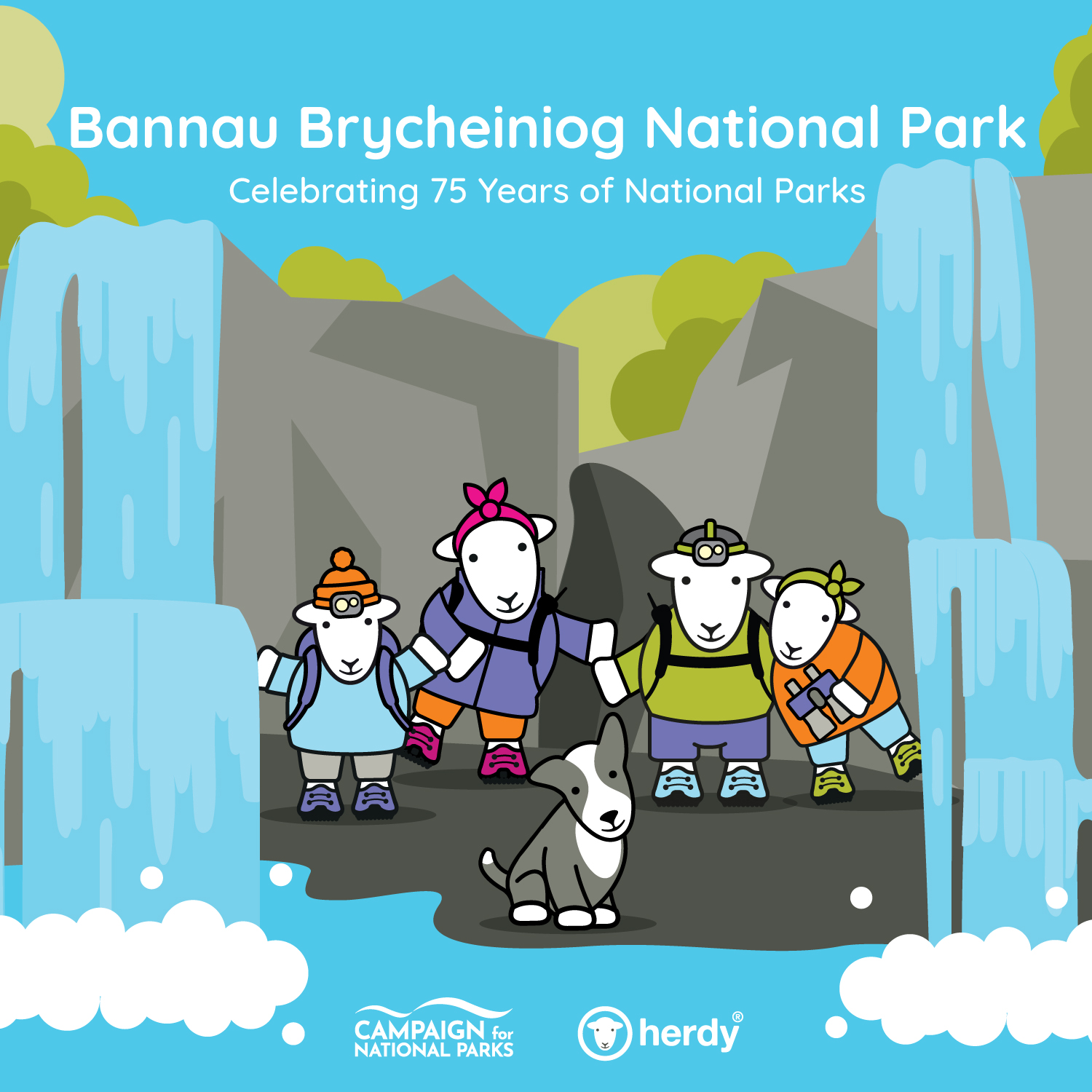
Now it’s off to Wales where Bannau Brycheiniog (Brecon Beacons) bids them a warm Croeso! Joe and Flo can step into a world of myths and legends with King Arthur and the Knights of the Round Table who are said to be buried in one of the Park’s many subterranean caves.
Fun Facts
- Bannau Brycheiniog was Wales’ first designated International Dark Skies Reserve.
- The Park is well known for myths and legends, King Arthur and the Knights of the Round Table are said to be buried in one of the Park’s many subterranean caves
- Home to a thriving red kite population
- The Batcave entrance from The Dark Knight Rises is located at Henrhyd Falls, the tallest waterfall in the Park.
Threats facing Bannau Brycheiniog
Overdevelopment, climate change
11. Penbrokeshire
Time for a trip to the ocean where they are spoilt for sea views in Pembrokeshire Coast, but dig a little deeper and you can find an extraordinary variety of rock types and landforms, an incredible display of geodiversity.
Fun Facts
- The Pembrokeshire Coast is the only National Park primarily designated for its coastal landscape with nowhere in its area being more than 10 miles from the sea.
- The Pembrokeshire Coast National Park displays an extraordinary variety of rock types and landforms. It is this geodiversity that was one of the deciding factors leading to the designation of the Pembrokeshire Coast as a National Park in 1952.
- It is recognised internationally as important for many rare habitats and species- 80% of its 420km of coastline is within Sites of Special Scientific Interest- and is unique amongst National Parks for attracting a number of sea creatures including porpoises, turtles, blue sharks and grey seals.
Threats facing Pembrokeshire
Water pollution, invasive species, wildfires

12. Eryri (Snowdonia)
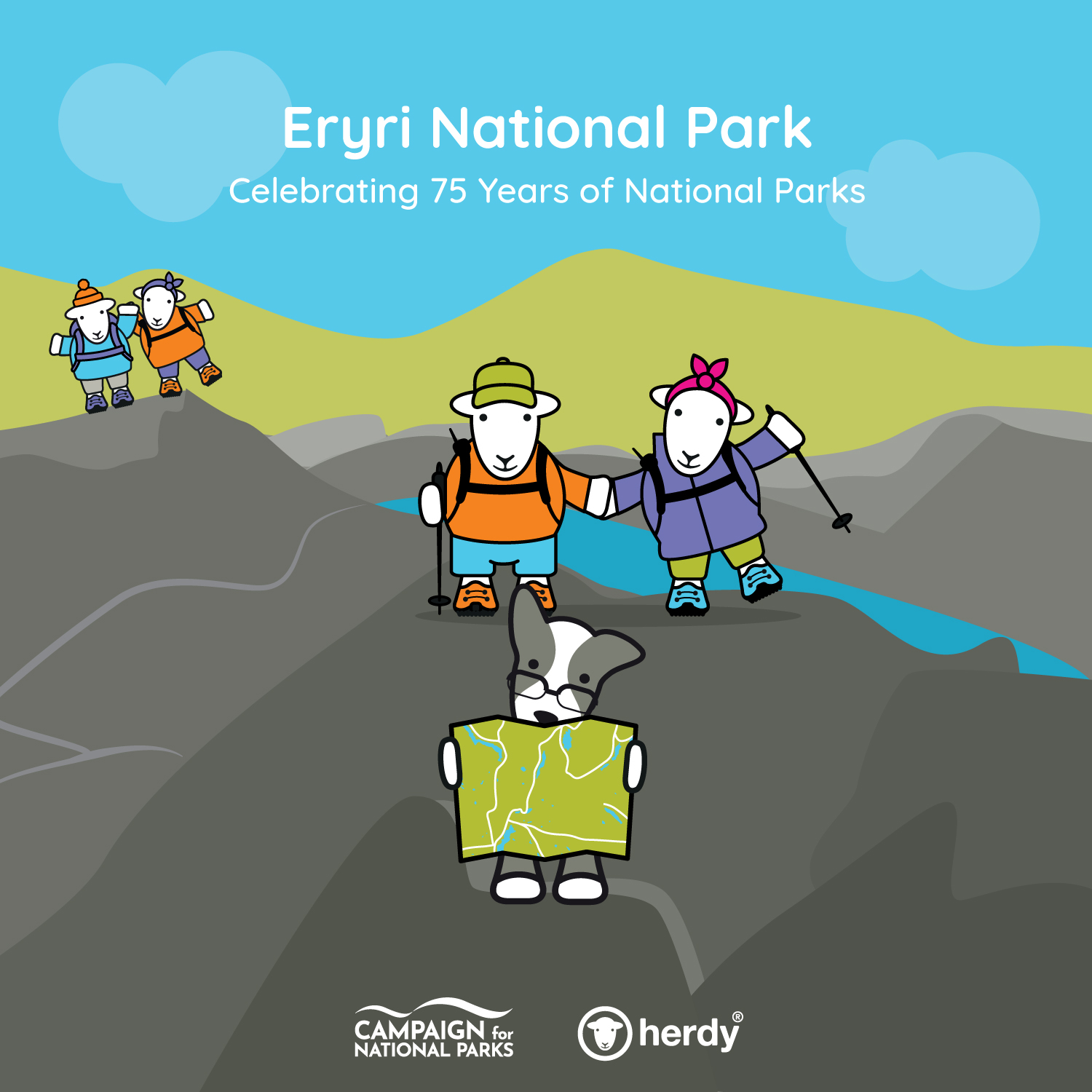
Time to brush up on their Welsh as Joe and Flo head to their penultimate Park, Eryri. There’s no time to rest when Eryri boasts nine mountain ranges and 15 peaks above 3,000 feet.
Fun Facts
- Formed through millions of years of geological activity, Eryri National Park is an awe-inspiring upland landscape home to nine mountain ranges and 15 peaks above 3,000 feet.
- Eryri has a rich cultural heritage of art, tradition and language that give it national importance in Wales.
- Eryri is home to Wales highest peak, Mount Snowdon, which stands 3560 ft tall.
Threats facing Eryri
Over tourism, climate change, invasive species
Where will Joe and Flo be next week...
Over the next few weeks Joe and Flo will continue their adventures around all the national parks. Seeing amazing things and creating some great memories. But they know that despite their protected status, National Parks are under a lot of pressure from a variety of threats. From pollution and habitat destruction to over-development and lack of resources. There’s lots to be done to make sure that National Parks can thrive into the future and everyone can have the same access to experience that Joe and Flo have had.
That’s where the Campaign for National Parks comes in. While it might be time for Joe and Flo to put their hooves up, Campaign for National Parks is fighting for the future of National Parks in England and Wales. Their independence from the Government means they can speak out for Protected Landscapes when no one else can. Founded in 1936, they bring together a campaigning collective of organisations and individuals from all walks of life, united in a common cause. Their first campaigns resulted in the creation of our National Parks.
They want a world where nature and people are thriving in our National Parks. Where wildlife is wild and natural beauty is protected for generations to come and where everyone, no matter their age or background, can access, feel inspired by and fight to protect the future of these truly amazing landscapes.
With National Parks at the heart of everything they do, they are here to unite, inspire and empower everyone to take action.
Featured Products
Herdy are celebrating the fantastic work by Campagin for National Parks by donating a percentage of profits from the sale of Herdy’s Roam Free mugs and tea towel.
A percentage of the profits from the sale of these items will be donated to Campaign For National Parks charity registered no.295336







